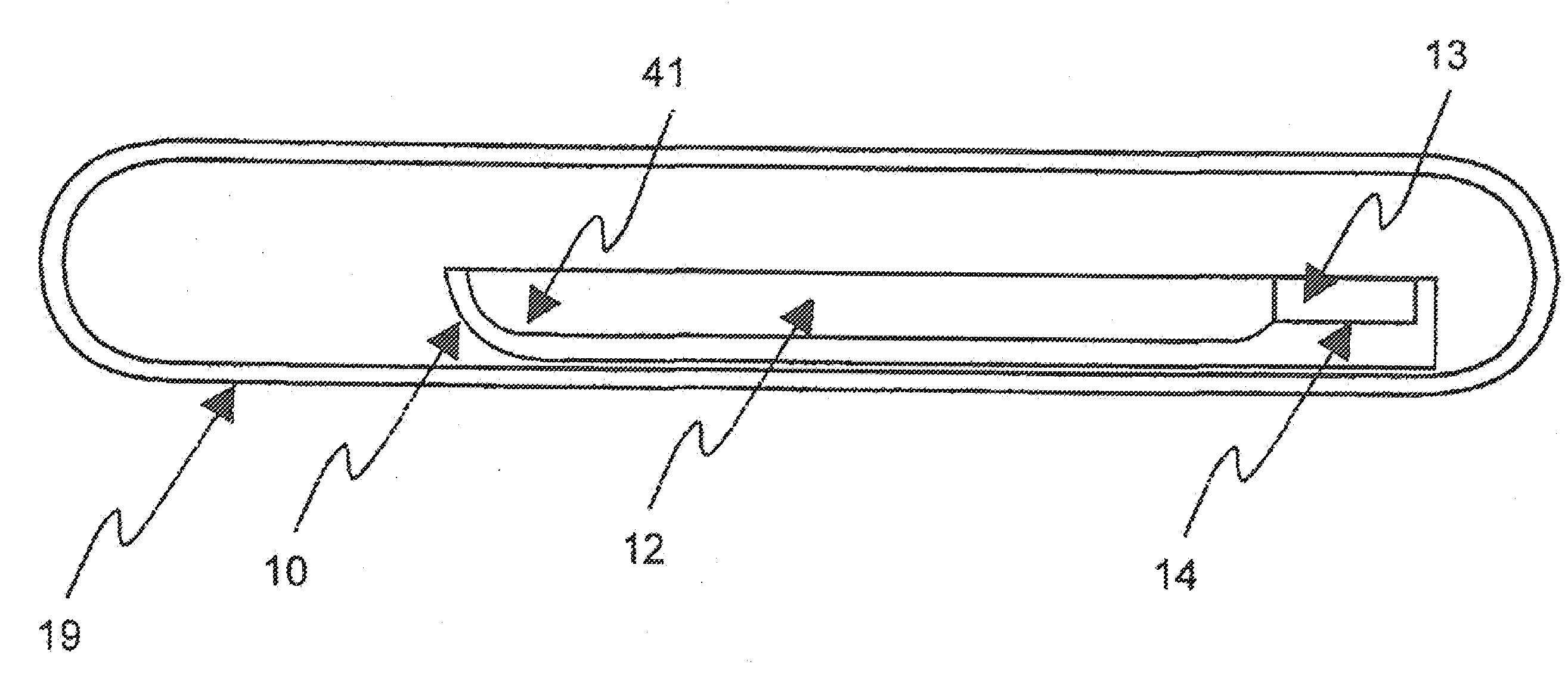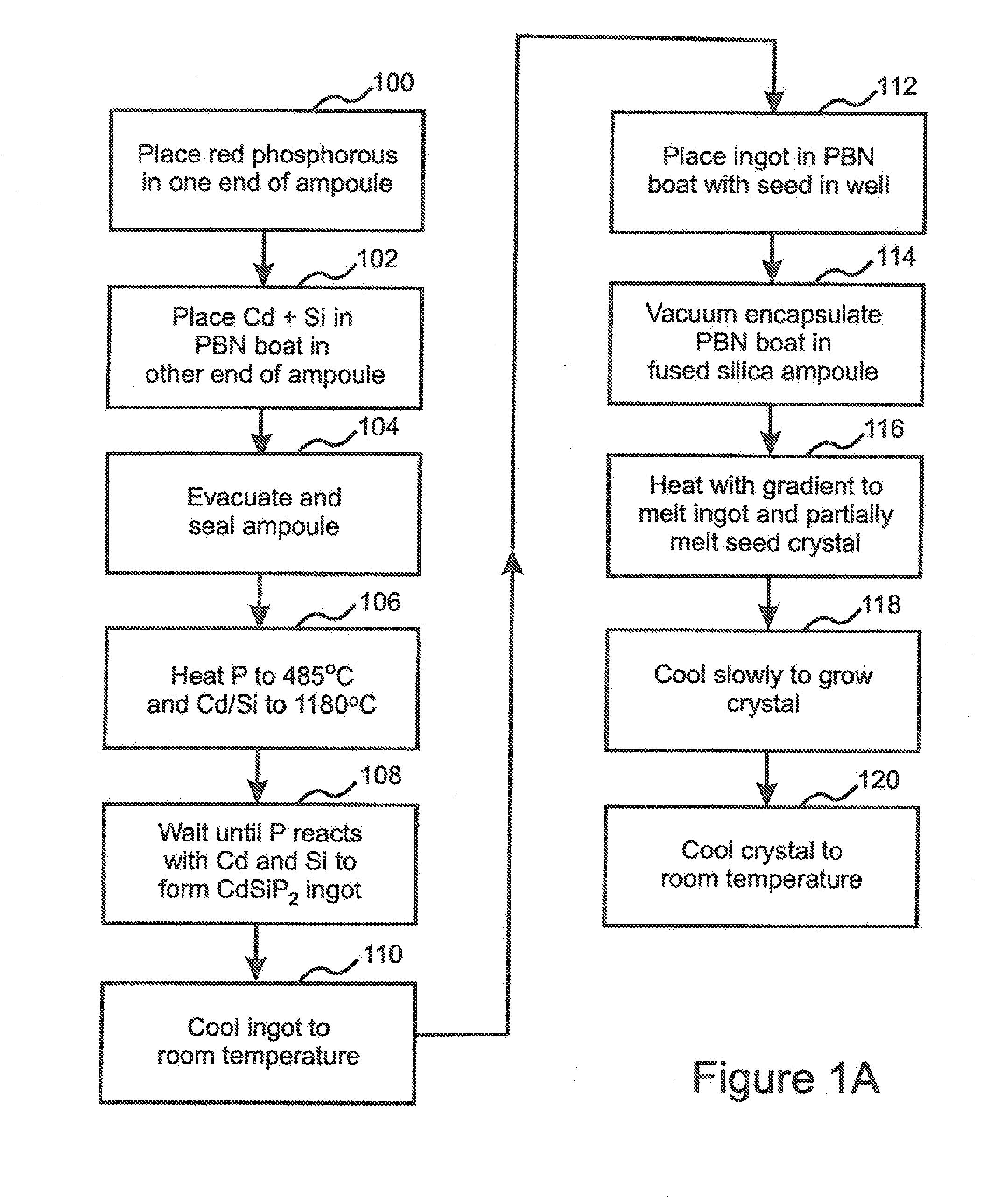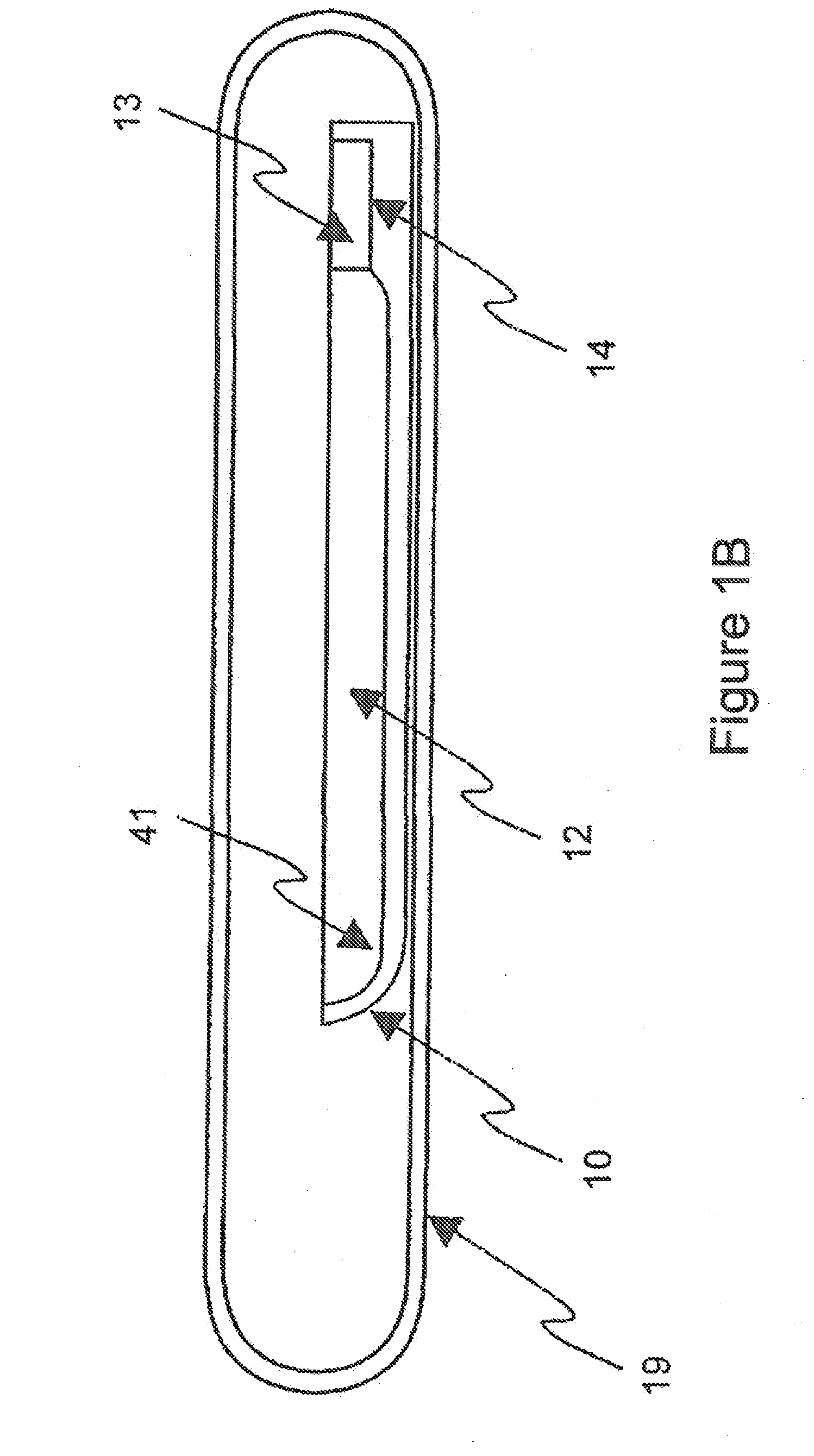NONLINEAR OPTICAL CdSiP2 CRYSTAL FOR USE IN SURGICAL LASER
a laser and optical cdsip2 technology, applied in the field of nonlinear optics, can solve the problems of poor thermal properties, low damage thresholds, and preventing the use of high average power applications, and achieve the effects of enhancing optical quality and size, and sufficient size and optical quality
- Summary
- Abstract
- Description
- Claims
- Application Information
AI Technical Summary
Benefits of technology
Problems solved by technology
Method used
Image
Examples
example 1
[0066]22.0453 g of red phosphorus was loaded into one end of a heavy-walled, fused silica ampoule, and a PBN-coated graphite boat containing 9.9948 g silicon and 40.0034 g cadmium was loaded into the opposite end. The ampoule was evacuated, sealed, and loaded into a two-zone shunt-type tube furnace with a Hastelloy C-276 protective liner. The programmed heating cycle was as follows: zone 1 (hot zone, containing the boat with Cd and Si) was heated at 50° C. / hr to 1025° C., 37.9-hr soak, 25° C. / hr to 1180° C., 8-hr soak, cool at 100° C. / hr; zone 2 (containing P) was heated at 50° C. / hr to 485° C., 28-hr soak, 25° C. / hr to 1180° C., 8-hr soak, cool at 100° C. / hr.
[0067]The resulting single phase polycrystalline ingot was loaded into a PBN-coated graphite boat with a seed well containing a CdSiP2 single crystal seed oriented for horizontal growth along the (001) c-axis direction with the (110) axis normal to the top surface. The boat, charge, and seed were vacuum encapsulated in a heavy-...
example 2
[0068]A CdSiP2 crystal obtained by using the procedure of Example 1 with excellent mechanical properties was cut and polished into a body of 3×6×12 mm3 after determination of the crystallographic axes a and c at phase matching angles of θm=42.5 degrees and φ=45 degrees. The crystal was placed in the optical path shown in FIG. 3 without mirrors 312 and 313. The incident wave 305 was from a frequency-doubled, Q-switched CO2 laser of wavelength 4.64 microns. The emerging second harmonic wave 307, 308 with a wavelength of 2.32 microns was obtained. The uncoated crystal achieved 30% optical-to-optical conversion efficiency.
example 3
[0069]A CdSiP2 crystal obtained by using the procedure of Example 1 was cut into a body of 6×6.75×9.5 mm3 after determination of the crystallographic axes a and c at phase matching angles of θm=90 degrees and φ=45 degrees. The residual losses measured for the relevant polarizations (e for the pump and o for the signal and idler) were 0.185 cm−1 at 1064 nm, 0.114 cm−1 near 13 μm, and 0.014 cm−1 near 6.4 μm. Both faces were AR-coated for the three wavelengths (pump, signal, and idler) and the 8-layer coating resulted in averaged reflectivity per surface of ˜0.35% at 1064 nm, ˜0.4% at 1275 μm and ˜0.8% at 6400 nm. The crystal was placed in the optical path shown in FIG. 3. The incident wave 305 was from a Q-switched 1064 nm Nd:YAG laser: no two-photon absorption was observed. The internal crystal angle was approximately 0.67° below the desired 90° interaction angle, resulting in a signal wavelength 307 of 1.277 μm and an idler wavelength 308 of 6.398 μm, which was increased to 6.45 μm ...
PUM
| Property | Measurement | Unit |
|---|---|---|
| wavelength | aaaaa | aaaaa |
| wavelengths | aaaaa | aaaaa |
| distance | aaaaa | aaaaa |
Abstract
Description
Claims
Application Information
 Login to View More
Login to View More - R&D
- Intellectual Property
- Life Sciences
- Materials
- Tech Scout
- Unparalleled Data Quality
- Higher Quality Content
- 60% Fewer Hallucinations
Browse by: Latest US Patents, China's latest patents, Technical Efficacy Thesaurus, Application Domain, Technology Topic, Popular Technical Reports.
© 2025 PatSnap. All rights reserved.Legal|Privacy policy|Modern Slavery Act Transparency Statement|Sitemap|About US| Contact US: help@patsnap.com



